If you have a modern washing machine, you’ve probably noticed that it has a baby cycle. What is a baby cycle, and how does it work?
The baby cycle on washing machines is an extended hot water cycle that’s gentle on baby clothing but effectively removes bacteria. It rinses the laundry several times to ensure that all traces of detergent that can irritate a baby’s sensitive skin are removed.
This article will explain how a baby cycle on a washing machine works and the benefits of using one. I’ll also explain how to clean baby clothes if you don’t have a baby cycle on your washing machine. Let’s get started!
What’s the Baby Cycle For?
The baby cycle is a washing machine setting designed for baby clothes and accessories. It uses a warm temperature (usually between 85°F and 100°F/30°C and 40°C) and typically lasts for about 2 hours to ensure that all traces of laundry detergent have been removed.
Babies have extra-sensitive skin, and even the most gentle laundry detergent can irritate them. Since they don’t have fully-developed immune systems, it’s important to protect them from bacteria, and washing their clothes in hot water is one way to do this.
In addition to baby clothes, you can also use the baby cycle for the following baby accessories:
- Cloth diapers
- Soft toys
- Bibs
- Soft shoes or slippers
- Bedding and blankets
Below are some other tips for using the baby cycle:
Wash Your Baby’s Clothes Separately
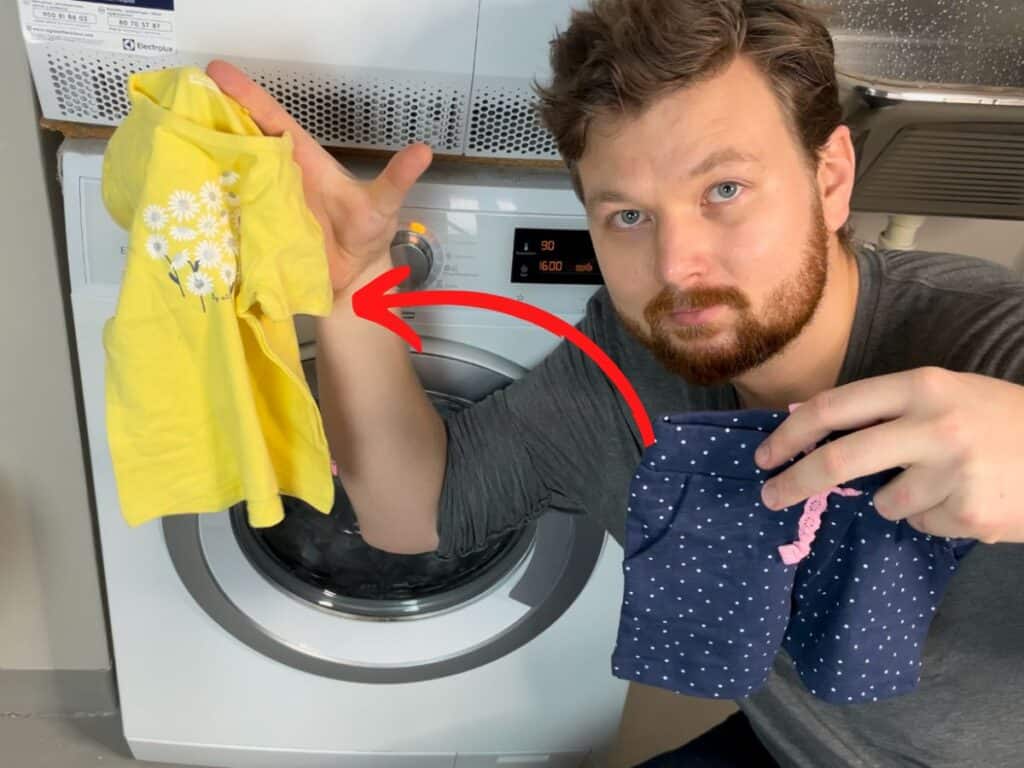
Avoid washing other laundry with your baby’s clothes and accessories. Although throwing in the rest of the family’s laundry with the baby cycle can feel tempting, it may contain bacteria or other pathogens that can only be removed if washed at temperatures hotter than a baby cycle. These pathogens can transfer to your baby’s laundry, and put your baby at risk of infection.
Scrape Off Dirt Before Using The Washer
When using the baby cycle to clean cloth diapers and dirt or food-encrusted bibs or clothes, scrape off as much as you can before placing it in the washer and give it a quick rinse. This will help them to come out as clean as possible.
Use a Gentle Detergent
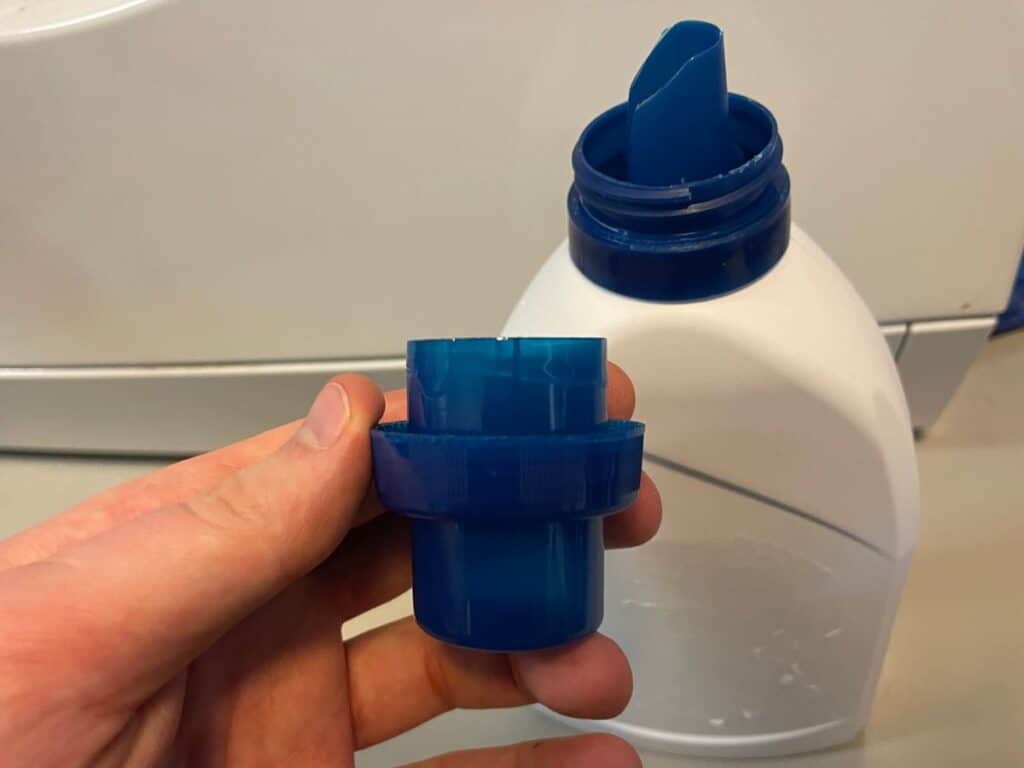
A non-biological detergent or a baby detergent is best for washing baby clothes. These detergents don’t have harsh enzymes or fragrances and are gentle enough for babies and people with allergies or eczema.
Using a biological detergent on your baby’s clothes can be tempting because it’s more effective at stain removal. However, babies have delicate skin and can be sensitive to harsh chemicals in biological or enzymatic detergents.
Avoid Using Fabric Softener
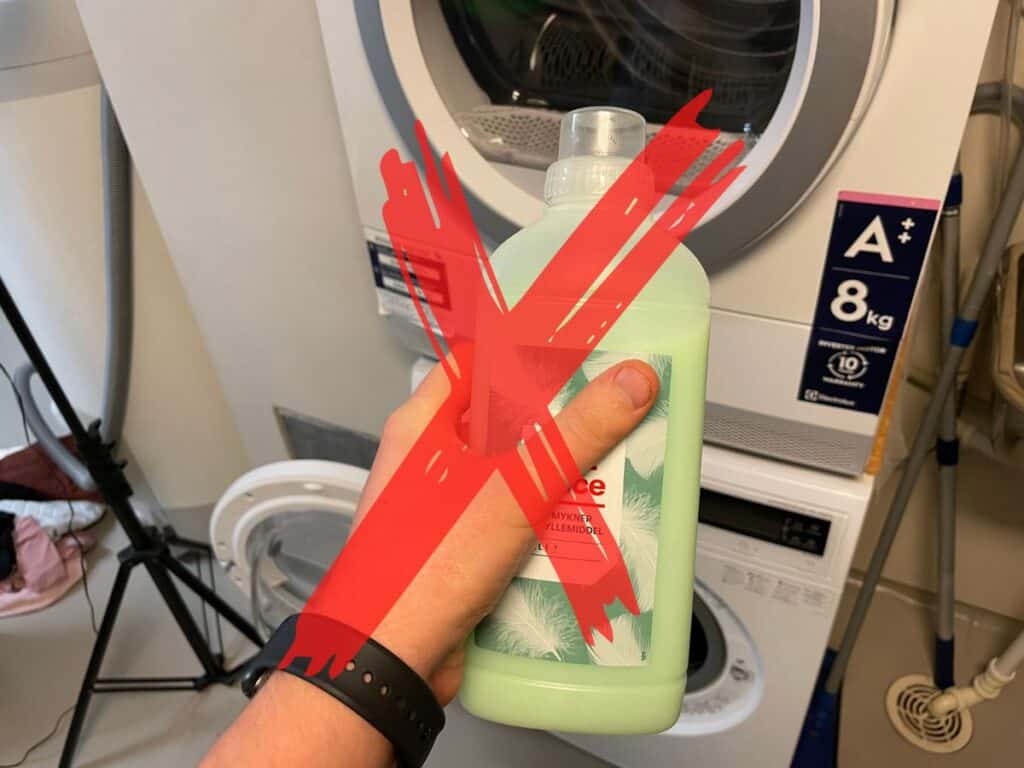
Fabric softeners can make baby clothes and bedding feel soft and smell pleasant, but, like biological laundry detergent, they can irritate a baby’s sensitive skin. Some fabric softeners are gentle and suitable for baby clothes, but it’s best to limit the number of products you use to clean your baby’s clothes.
Use the Baby Setting If You Have Allergies or Eczema
If your washing machine doesn’t have an allergy setting, and you suffer from allergies or eczema, you can use the baby setting to wash your clothing. The baby setting will remove residual detergent that can aggravate eczema, and the hot water will kill pollen and other allergens.
Dry Your Baby’s Laundry As Soon As Possible
After washing your baby’s clothing or bedding, dry it as soon as possible. If it remains wet for too long, bacteria, mold, or fungi can develop and harm your baby.
You can dry your baby’s clothing in a dryer or air-dry it in a sunny and well-ventilated place. Avoid using dryer sheets as they contain trace amounts of harsh chemicals that can transfer onto your baby’s skin and cause irritation.
A dryer ball is more suitable. Wooly Heroes Dryer Balls from Amazon are eco-friendly and feature delightful animal faces. They’ll help speed up the drying process and can also double as s toy for your baby!
How Do I Wash Baby Clothes Without a Baby Cycle?
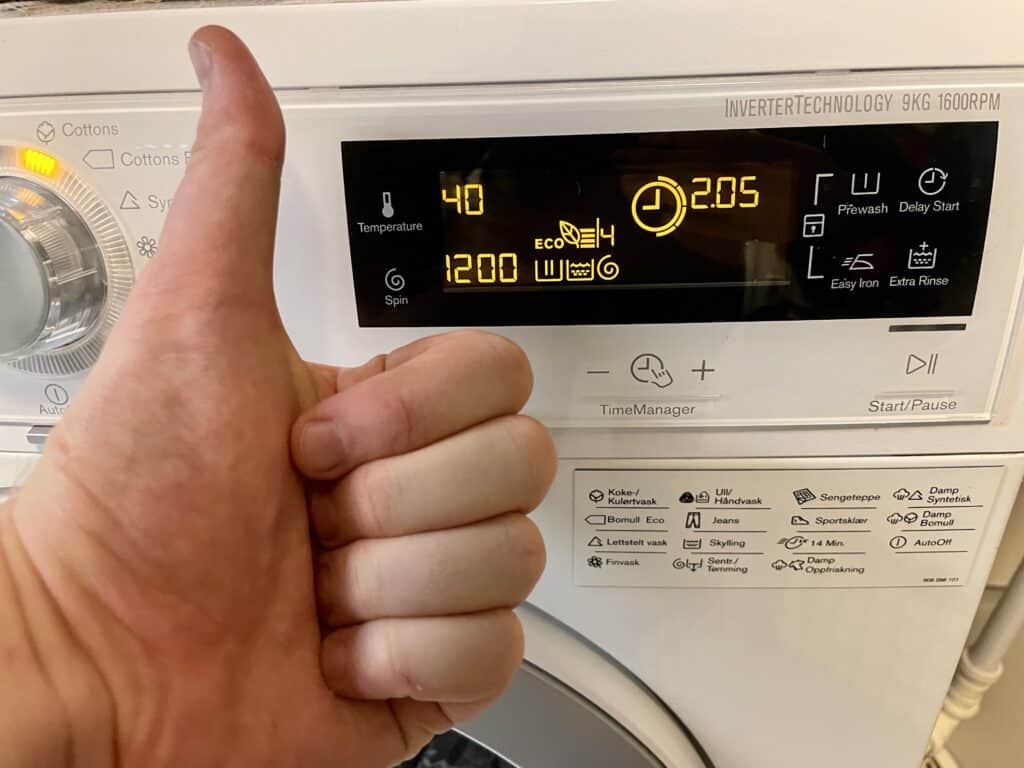
You can wash baby clothes without a baby cycle on your washing machine by selecting a long washing cycle (preferably one that’s around 2 hours). Use a gentle detergent suitable for babies, and set the temperature between 85°F and 100°F/30°C and 40° C.
If you don’t have a washing machine, you can hand wash your baby’s clothes. It’s a time-consuming process but gives you complete control over how the clothes are washed.
Here’s how to do it:
- Inspect the clothes to be washed, and scrape off any encrusted dirt or bodily excretions. Throw it in the trash or flush it down the toilet.
- Rinse the clothes thoroughly in cold water, and wring them out.
- Fill a sink or large container with tepid water (use a thermometer to ensure that the temperature is between 85°F and 100°F/30°C and 40° C). Make sure that the water covers the clothes completely.
- Grab some gentle laundry detergent that’s suitable for babies and pour the required amount into the water. Check the label because the handwash amount typically differs from the amount you place in a washing machine.
- Agitate the clothes with your hands to create plenty of suds and ensure that the detergent is well-dispersed. Leave it for half an hour to soak.
- Agitate the clothing again, wring it out, and pour out the soapy water.
- Rinse the clothing with fresh water, continuously wringing it out and rinsing it until you no longer notice suds.
- Dry the clothes as you normally would in a dryer or by air drying it.
Conclusion
The baby cycle on a washing machine is usually about 2 hours long and uses a water temperature of between 85°F and 100°F/30°C and 40° C. It rinses the baby’s clothing well so that no detergent remains (which can irritate your baby’s delicate skin).
If you don’t have a baby cycle on your washing machine, you can select a long washing program and set the correct temperature. For hand washing baby clothes, follow the guide mentioned above.
If you want to learn more about your washing machine’s settings, check out this article.
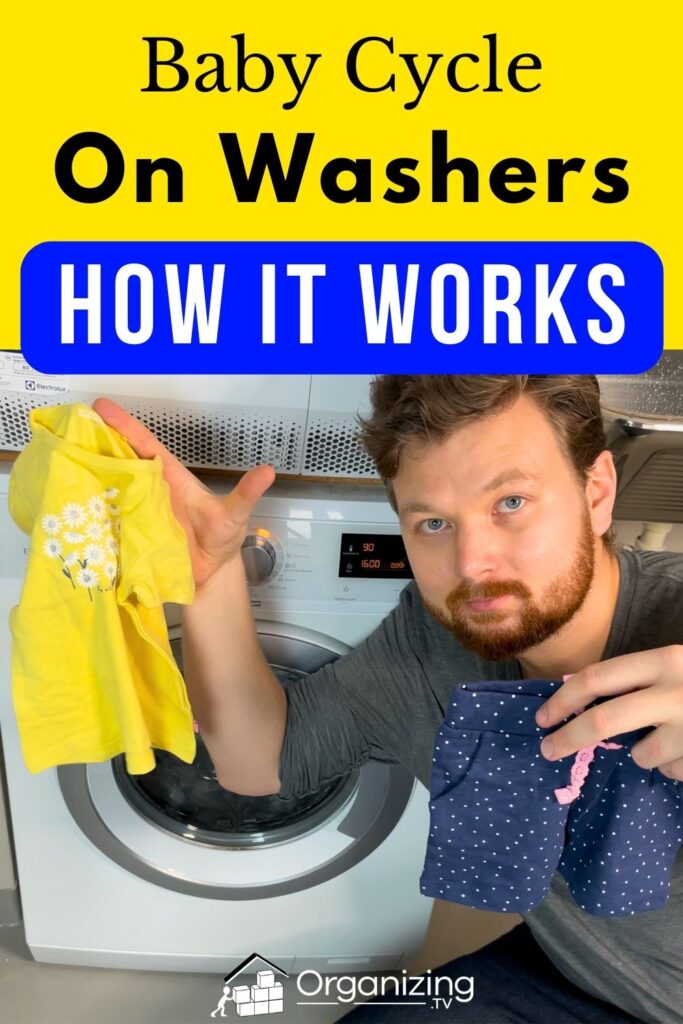

I’m an expert wardrobe organizer and a bit of a clean freak. I created this website and its YouTube channel to share practical guides about laundry and organizing. My teachings have been featured in multiple large news publications, and I’ve self-published two wardrobe organizing books and an entire course on the subject.
